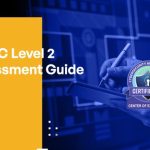Certification doesn’t just measure cybersecurity controls—it measures how an organization works under pressure. The process reveals strengths, exposes weaknesses, and forces a closer look at how daily operations align with compliance demands. For teams preparing for a CMMC Certification Assessment, the test is as much about readiness and adaptability as it is about technical security.
How certification timelines weave into your cybersecurity rhythm
Timelines are not just scheduling details—they become part of the security culture. A CMMC Certification Assessment has milestones that influence project pacing, technology upgrades, and team coordination. Companies that map their security enhancements to these dates tend to maintain steadier progress. Instead of rushing before deadlines, they build controls into ongoing routines, keeping readiness levels consistent. This approach ensures that the final review is a confirmation of work already done, not a last-minute scramble.
Organizations working with a CMMC assessment guide often learn to anticipate rather than react. Internal audits, mock assessments, and readiness drills can be timed to match certification stages. This rhythm becomes a safeguard against gaps, reducing the risk of delays or costly rework. A consistent timeline doesn’t just help pass the assessment—it reinforces a habit of staying compliant every day.
The three-year checkpoint: keeping your compliance alive
Certification isn’t forever—it has a lifespan. For CMMC Level 2 Certification Assessment holders, the three-year revalidation ensures that security controls remain current. This checkpoint is more than a formality; it’s an opportunity to refine systems, replace outdated processes, and address new risks. Organizations that treat it as a living standard rather than a one-time hurdle stay stronger in the long term.
The most effective approach is to maintain an active compliance program that never stops after initial certification. CMMC consulting experts often advise continuous logging, periodic internal reviews, and keeping vendor compliance in check. By doing so, the three-year reassessment becomes a predictable milestone instead of a disruptive event. It confirms that security hasn’t just been maintained—it’s been improved.
What happens when CMMC gaps shut your bidding door
A missed requirement in a CMMC Level 2 Assessment doesn’t just delay certification—it can remove a company from contract eligibility entirely. For organizations bidding on federal contracts, the CMMC Certification Assessment acts as a gatekeeper. Without a passing score, the bidding door closes, sometimes for months. This can create both revenue loss and reputational setbacks.
The risk is not always from technical weaknesses—often, process documentation and evidence handling are where gaps appear. A CMMC assessment guide can help teams identify these trouble spots early, ensuring that compliance is provable. Federal contract opportunities move quickly; being caught mid-gap can mean losing out on business that won’t come around again soon.
Accelerating readiness: months of prep, not years
Preparing for certification doesn’t have to stretch over years. With structured planning and targeted CMMC consulting, organizations can be assessment-ready within months. The key is focused preparation—starting with a gap analysis, implementing the most impactful controls first, and training staff in both policy and technical responsibilities. By working from the top priorities downward, companies gain compliance faster without sacrificing quality.
Speed is not about cutting corners—it’s about cutting inefficiencies. The right CMMC Level 2 Certification Assessment preparation plan aligns resources with the most critical requirements. This ensures that every hour spent in readiness translates into measurable progress. Faster preparation also means less time spent under the pressure of upcoming contract bids.
Certification’s expiry date—and what comes next
The expiry date on a CMMC Certification Assessment signals a natural point of renewal. While some teams see it as a reset button, the best-prepared organizations see it as a continuation of a cycle. The new certification process often builds on the previous one, meaning that well-maintained records, updated systems, and consistent security reviews make the re-certification smoother.
Planning for what comes after expiry means anticipating changes in compliance standards. CMMC consulting partners often flag updates in requirements well before they become mandatory. Staying ahead of those shifts keeps the next assessment from becoming a rebuild. Instead, it becomes a refresh—a lighter lift that still satisfies the CMMC Level 2 Assessment criteria.
Fail the audit, lose the contract—why compliance matters
Failing a CMMC Certification Assessment has immediate consequences for contract eligibility. For contractors in the defense supply chain, this can mean losing current work or being barred from bidding on new projects. The loss is more than financial—it signals to partners and clients that compliance isn’t being taken seriously, which can damage long-term relationships.
Maintaining compliance requires more than passing an audit once. It involves ongoing monitoring, periodic internal checks, and keeping every department aligned with security policies. Organizations that integrate CMMC standards into daily operations rarely face the shock of failure. Instead, they meet each audit as a confirmation of what they already do well.
Smoothing audit prep: short assessment, lasting impact
The audit itself may be relatively short compared to the months of preparation, but its impact lasts through the certification period. The goal is to enter the CMMC Level 2 Certification Assessment with confidence that documentation, processes, and technical safeguards are ready to be reviewed without hesitation. That level of readiness comes from practice and repetition, not last-minute fixes.
Preparation guided by a CMMC assessment guide ensures that teams know what will be reviewed and how to present it. Mock audits, organized evidence repositories, and clear role assignments make the actual assessment efficient. The smoother the process, the less disruptive it is to business operations, and the stronger the impression left on assessors. A short, well-executed assessment can validate years of steady compliance discipline.









